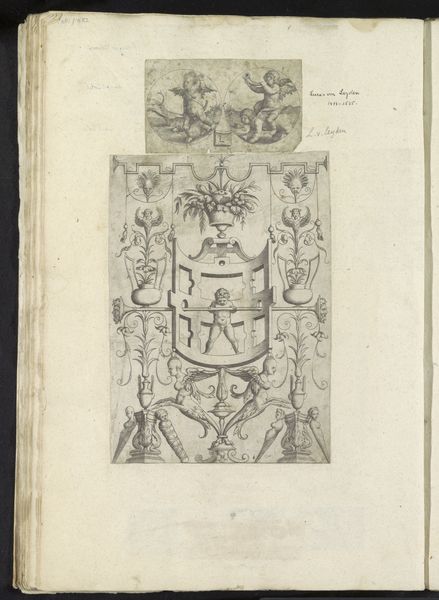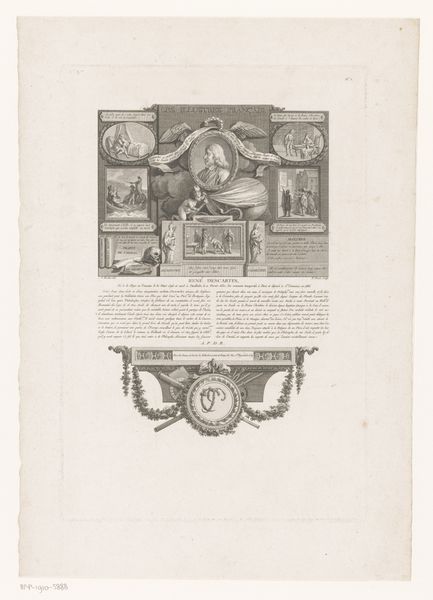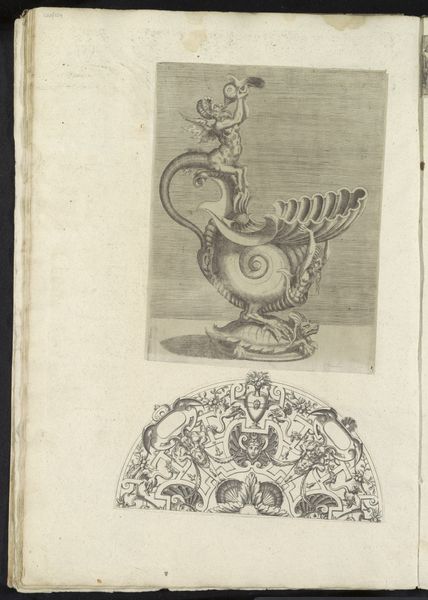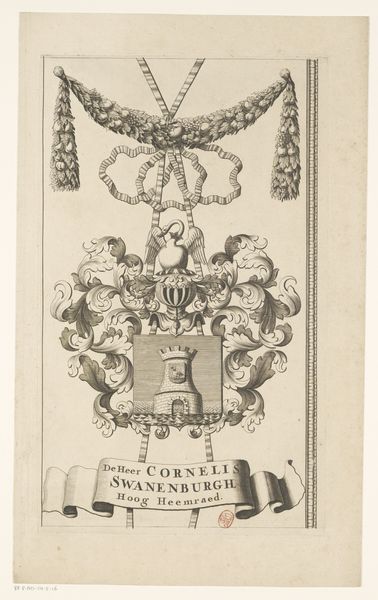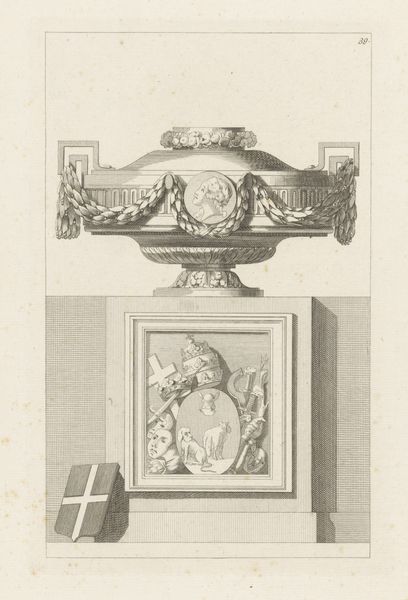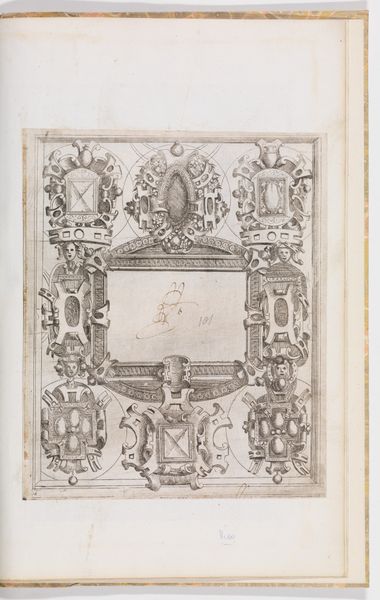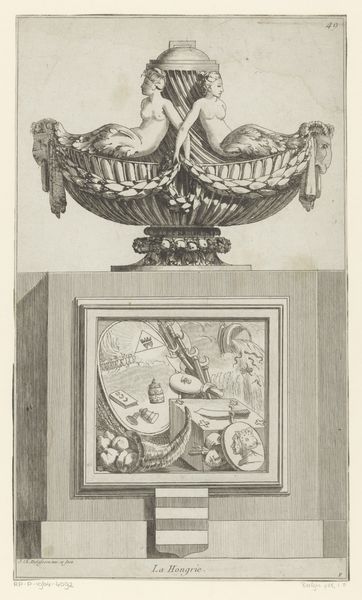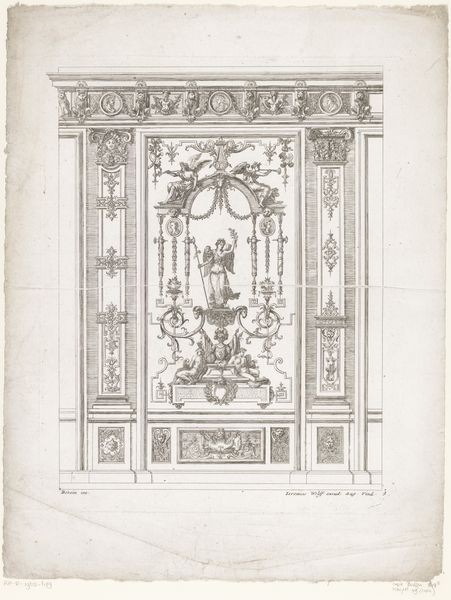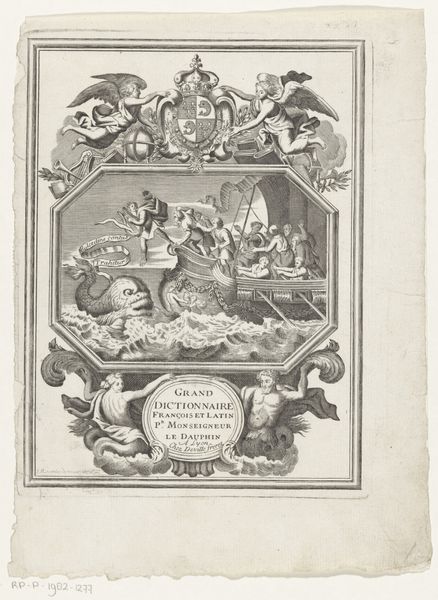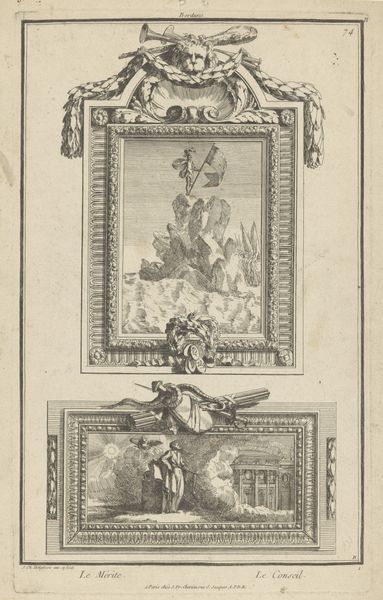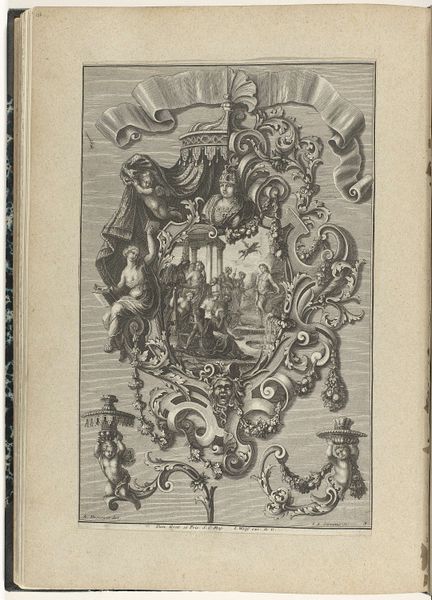
drawing, print, paper, ink, engraving
#
drawing
#
aged paper
#
toned paper
# print
#
old engraving style
#
sketch book
#
paper
#
form
#
11_renaissance
#
personal sketchbook
#
ink
#
geometric
#
pen-ink sketch
#
pen and pencil
#
line
#
pen work
#
sketchbook drawing
#
history-painting
#
sketchbook art
#
engraving
Dimensions: height 430 mm, width 292 mm
Copyright: Rijks Museum: Open Domain
Editor: So, this is "Albumblad met vier ornamentprenten," from the 16th century, author is Monogrammist VG, and it's ink and engraving on paper. It really feels like a page from a design book, all these elaborate decorative elements. I’m curious – what does this piece say about the art world in its time? Curator: That's a good observation. This isn't 'high art' in the modern sense; it’s a functional object. In the 16th century, the lines between art, craft, and industry were much more blurred. Prints like these were crucial in disseminating design ideas. Think of them as the Pinterest boards of the Renaissance, spreading new styles across Europe and shaping visual culture. Who do you think was the intended audience for something like this? Editor: Architects and artisans, maybe? People who needed inspiration for building details or furniture? It's definitely practical, but the craftsmanship is exquisite. Curator: Precisely. These prints democratized design. An artisan in a small town could access the latest trends from major artistic centers, impacting what buildings looked like and how objects were adorned. This image gives a glimpse into the engines that fueled the Renaissance visual world and reveals something about who had access to artistic trends and when. Where do you think images like this might have originated and proliferated in society? Editor: Workshops and publishing houses, maybe connected to courts or wealthy patrons? It feels like part of a bigger system of production and patronage. That’s something I didn’t quite think about initially! Curator: Exactly! Seeing art as part of a broader social and economic web lets us understand not just the aesthetic value, but also the power dynamics that shape artistic expression. These 'minor' arts often held surprising power! Editor: I hadn't really considered how art impacted wider society beyond painting or sculpture, but seeing this as an engine for creativity is really eye-opening. Thank you for pointing this out!
Comments
No comments
Be the first to comment and join the conversation on the ultimate creative platform.
